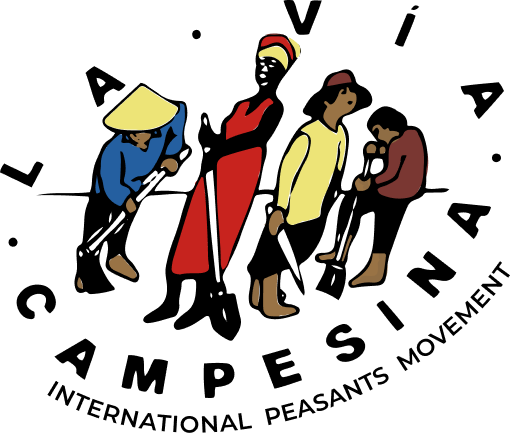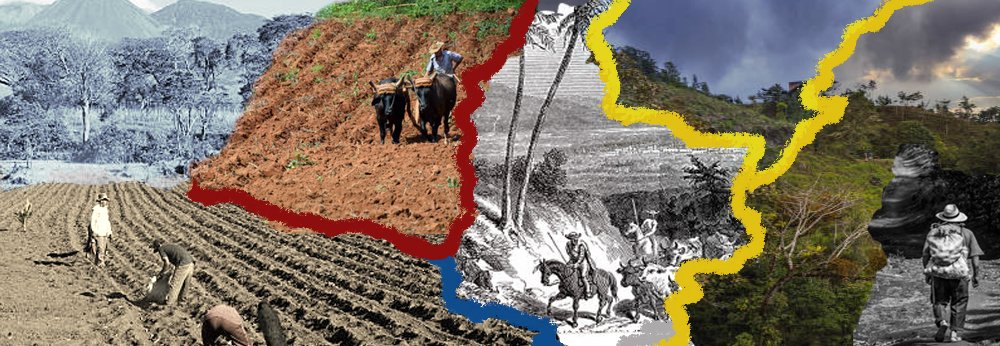The Colombian government announced in December the creation of a new agrarian judiciary to resolve land conflicts in rural areas of the country, often between peasant farmers and large companies.
The first five agrarian courts will open in May in the cities of Cartagena, Quibdó, Popayán, Pasto and Tunja, with 65 more to come. Peasant farmers, or campesinos, have long struggled for recognition by the state, and advocates have praised the new development as a victory years in the making.
However, some have expressed concerns over its implementation and say the courts must ensure access to justice no matter how unequal the social, economic or cultural differences are between the parties. Colombian President Gustavo Petro’s recent announcement of a new court system to resolve land ownership conflicts in rural areas of the country has drawn a mixed response from advocates of campesino rights, some of whom have hailed it as a “great advance,” while others have questioned whether it will really work.
The Dec. 29 announcement calls for five new courts to be opened in the cities of Cartagena, Quibdó, Popayán, Pasto and Tunja by May 2, with another 65 courts to follow, according to Aurelio Enrique Rodríguez, president of the Superior Council of the Judiciary. The courts will oversee agrarian issues, which currently fall under Colombia’s civil court system — a system critics say lacks specialized judges to clear the backlog of tens of thousands of pending cases.
“We see it as a great advance that this agrarian jurisdiction has been recognized,” said Nury Martínez, president of the National Agricultural Trade Union Federation in Colombia (FENSUAGRO) and member of La Vía Campesina, an international movement that advocates for the rights of peasant farmers. “But when the courts begin to see its first cases, the appointed judges must have a lot of knowledge of agrarian law and must recognize the peasantry.”
Martínez said she’s worried that campesino communities won’t be included in decisions regarding the implementation of this new agrarian court system, given the long history of peasant rights being ignored in Colombia’s political and legal spaces. She pointed to the 1991 Constitution as an example: Although it ushered in progress for Colombia’s Indigenous and Black communities, it failed to offer the same rights and representation to campesinos.
It wasn’t until June 13 of last year that Colombia’s Congress approved an amendment to the Constitution that sought to correct this “historical exclusion” by recognizing peasant rights and granting them special constitutional protection.
“You can’t imagine the number of discussions we had with people from different institutions, agencies or territorial offices who have told us we cannot participate because we have to have a prior understanding of legal knowledge,” Martínez said. “They did not want to accept our knowledge.”
In a statement, Jhenifer Mojica, the minister of agriculture and rural development, said, “Our agricultural commitment is to respond to the urgency of solving the land problem in order to provide food security for our country, achieve peace and advance in the sustainability and environmental responsibility of the production of agriculture.”
The struggle for peace and reform
The proposal to create an agrarian judiciary stems from 2016, with the signing of a peace agreement between the government and the FARC rebel group. But it wasn’t until June 2023 that the agrarian judiciary was finally approved by Congress. “Within the framework of the agrarian jurisdiction that is created, the Government will ensure the existence of an agile and expeditious resource for the protection of property rights,” the final text of the agreement says.
Armed conflict and violence have been associated with land dispossession in Colombia for more than six decades, greatly affecting rural populations. According to the Geneva-based Internal Displacement Monitoring Centre, the country has one of the highest internal displacement levels in the world, with 4.8 million people displaced because of armed conflict and violence as of the end of 2022. That figure was an improvement from 5.2 million in 2021.
The long-running civil war between the government and FARC guerrillas saw many peasant communities expelled from or forced to abandon their lands, a large portion of which later fell into the hands of large companies. In 2017, U.K. development charity Oxfam reported that 80% of Colombia’s land was held by 1% of large farm holdings. Yet campesino communities, working with much less land, still produce more than 80% of the country’s food.
According to data from the National Land Agency (ANT), Colombia has a backlog of more than 37,000 agrarian processes that are yet to be addressed. Almost all of these, 95%, are awaiting clarification of ownership. Other cases involve irregular occupation of state-owned land (862), forfeiture of ownership over properties that “do not fulfill the social function of the land” or are pending demarcation (418).
Another effort by President Petro to resolve the unequal land divide is a promise to redistribute more than 3 million hectares (7.4 million acres) of land — an area larger than the country of El Salvador — to landless campesinos and Indigenous peoples who had been displaced by armed conflict and violence across the country. And in December, he signed peace accords with five of the largest armed groups in the country, promising to end the war on drugs that has fueled widespread violence and environmental destruction for more than 50 years.
Alejandro Reyes Posada, a lawyer and sociologist at Pontifical Javeriana University in Bogotá, told Mongabay that land conflicts in Colombia have always been dealt with using civil law — a common legal system that he says doesn’t consider agrarian law and “does not have judges specialized in its application.”
Mónica Parada, a researcher at the land research network Observatorio de Tierras, told Mongabay the new agrarian courts need to have judges and magistrates specialized in the social and economic dynamics of agrarian relations. She emphasized the importance of taking into account the specific situation and needs of those who live in rural areas, ensuring they can access justice no matter their financial situation or if there’s unequal social, economic or cultural differences between the parties. Ultimately, she said, it must guarantee that campesinos feel confident they can go to court against a much larger or more powerful contender for the land, often large farm holders.
“Agrarian justice recognizes this imbalance and guarantees that the weakest party in the relationship can access justice under conditions of material equality,” Parada said.
The new judiciary is one of the many tools that can be used to resolve agrarian conflicts, she said, adding that this and other tools need to be strong, with their own resources and presence where they’re most needed.
“This will make it possible to transform the relationship that citizens have with the administration of justice,” Parada told Mongabay. “[It will] increase their confidence in the institutions and discourage other mechanisms that, instead of reducing, fuel agrarian conflicts.”
This article by Aimee Gabay, forMongabay, has been republished verbatim, with permission. Cover Image: Fensuagro/La Via Campesina

